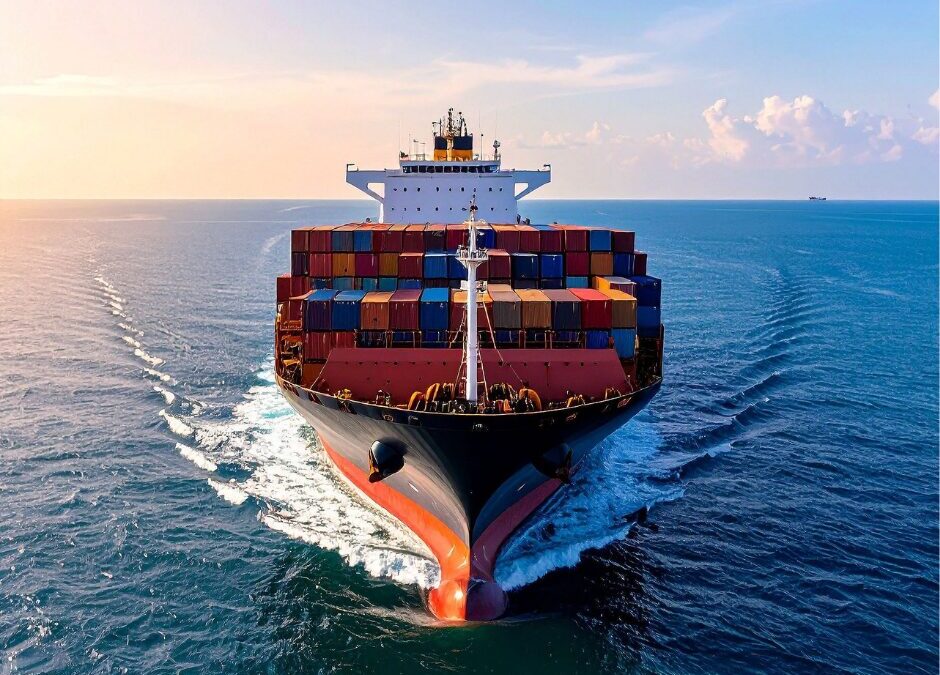- Need Assistance and Information?
- +1 718 981 7777
- +44 (0) 1794 830090
- sales@ummsc.com
Oxygen at Sea: Why Every Vessel Needs Reliable Onboard Supply

Why Medical Readiness at Sea Is More Than Just a First Aid Kit
June 30, 2022A crew member collapses. You’re days from shore. What happens next?
At sea, every second counts, and in a medical emergency, oxygen can mean the difference between life and death. Yet too many ships underestimate how vital a reliable onboard oxygen supply really is. It’s not some extra hardware. It’s critical to guard your crew, stay compliant, and get a response quickly when there is no room for error. Whether you’re commanding a commercial vessel, cruise liner, or offshore rig, your medical readiness hinges as much on your onboard oxygen as it does on all the rest. That’s why you can’t afford to cut corners.
The Role of Oxygen in Maritime Medical Response
Oxygen is often the first line of defense in maritime emergencies. In cases of chest pain, shock, trauma, or severe illness, supplemental oxygen stabilizes the patient until complete medical care is available. But when you’re far from shore or mid-ocean, waiting for help isn’t an option. That’s where a dependable onboard oxygen supply becomes essential.
Unlike onshore scenarios, ships have a delay in reaching higher levels of care. That means the oxygen you carry must be there, accessible, and sufficient. That’s not a “nice to have” scenario. It’s critical. Everyone on the crew relies on that system to work perfectly in a crisis.
Whether oxygen for ships that travel long distances or for offshore operations that are exposed to high-risk areas, carrying on board the appropriate oxygen system saves time and lives. For that reason, any safety officer should include an onboard oxygen supply as part of maritime readiness.
Regulatory Requirements for Medical Oxygen at Sea
Maritime law does not leave medical readiness to chance. Regulations like SOLAS and MLC 2006 require ships to carry particular medicines on board, and oxygen is one of them. These regulations are not simply about a box-ticking exercise. They are based on painful experiences from real emergencies at sea over many decades.
A compliant ship medical oxygen system must have a minimum amount, pressure, and storage depending on vessel size and type. That is only the start. Compliance alone is not enough. Oxygen systems must be maintained, available, and functional at pressure by trained crew.
An old or abandoned onboard oxygen supply not only invites fines at inspection but may put lives at risk. With regulators closing in on standards and inspection practices, complying protects your license, your crew, and your ship. It’s one of the easiest arguments where medical and legal priorities cross, and where being ready makes all the difference. In short, a smart ship prepares before the crisis.
Typical Issues with Having Oxygen Systems on Board at Sea
Having a working onboard oxygen supply isn’t as easy as keeping a few tanks in a locker. Cylinders will wear out over time. Valves will leak. Humidity and salt air will corrode components. Refills can take days, if not weeks, based on your location. And even if oxygen is available, crew members might not be adequately trained on how to use it under pressure.
These are everyday life situations that captains and safety officers get themselves into. When disaster strikes, you don’t want to discover your sea emergency equipment failed because no one paid attention. Reliability isn’t just about the equipment. It’s about being prepared and having a reliable backup.
Types of Onboard Oxygen Systems
All onboard oxygen supply systems are not of the same caliber. While some vessels utilize lightweight portable cylinders particularly well for small crew and small operations, other vessels demand fixed ship medical oxygen systems with built-in wall mounts, pressure regulators, and central storage.
Choosing the best configuration is a function of voyage length, crew size, and operating environment.
Offshore platforms may require high-capacity solutions. Commercial cargo ships, on the other hand, have modular kits that allow for easy replenishment. The challenge lies in ruggedizing your system, making it compliant, and deployable in a hurry. A lesser system not only doesn’t work, but you diminish your ability to deliver care in time.
The Unimed Difference: Enabling Readiness and Reliability
Universal Marine Medical provides more than oxygen tanks. We provide confidence. Our onboard oxygen supply systems are specifically designed for every type of vessel, from cruise lines to oil rigs. Each system is configured to satisfy maritime codes and endure the corrosive marine environment.
We offer full-service kits, refill logistics worldwide, and support 24/7. Whether you’re facing an inspection, preparing for a long haul, or responding to an emergency, Unimed ensures you’re never unprepared. Our ship’s medical oxygen systems are built for reliability. Our team is built for response. When lives are on the line, you’ll be ready with Unimed behind you.
Conclusion: Don’t Sail Without It
A reliable onboard oxygen supply is not just about checking a box. It’s being ready when it matters most. Don’t wait to be awakened. Check your ship’s oxygen systems now. Need professional help? Unimed is here to help you so your crew is safe, your ship is compliant, and you’re ever-ready.

